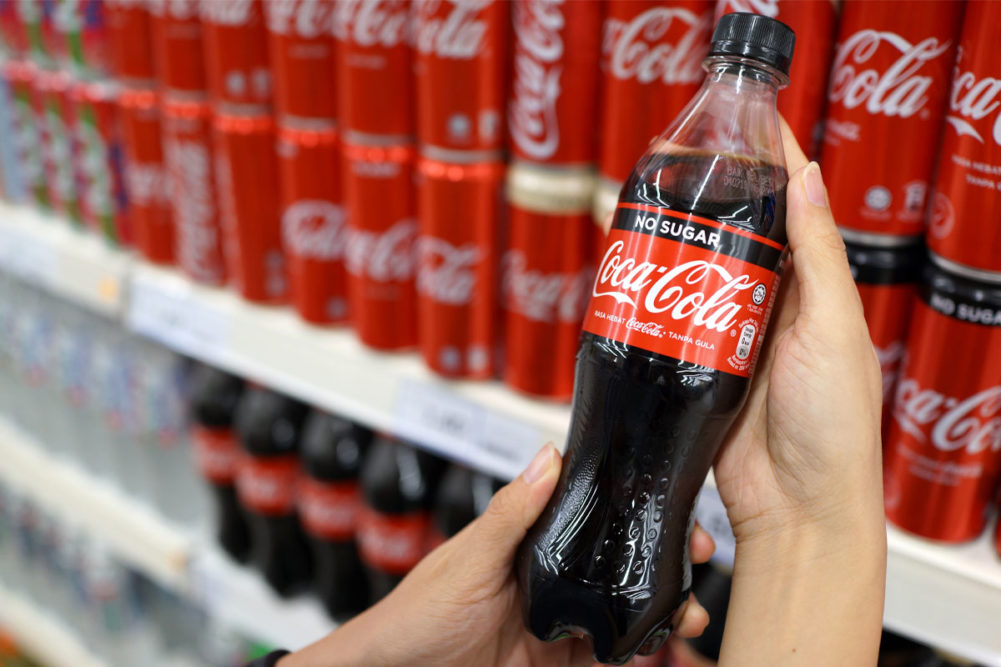ATLANTA — Expect more pricing actions from Coca-Cola in the current fiscal year. How high product prices will rise should depend on the geographic area.
“I mean there are countries where inflation is well over 50%,” said James Robert B. Quincey, chief executive officer, in a Feb. 14 earnings call to discuss fiscal-year financial results. “So pricing is taken multiple times a year. Argentina is an obvious example.
“So in the developed markets, it’s likely we’ll trend more back toward kind of more standard cycles of pricing, but there will be price increases across the world in 2023 to reflect both the continuing inflation in import and SG and A (selling, general and administrative) costs.”
Net income attributable to Coca-Cola Co. shareholders in the year ended Dec. 31, 2022, was $9.54 billion, equal to $2.20 per share on the common stock, which was down 2% from $9.77 billion, or $2.26 per share, in the previous fiscal year. Net revenue grew 11% to $43 billion from $38.66 billion.
Organic revenues increased 16% thanks to growth of 11% in price/mix and 5% in concentrate sales. Developed markets grew by mid-single-digit percentages, as did developing and emerging markets. Growth in India and Brazil had a positive impact, but suspending business in Russia had an unfavorable impact.
Coca-Cola executives in fiscal-year 2023 expect organic revenue to increase 7% to 8% and commodity price inflation to be a headwind in the range of mid-single-digit percentages.
“We expect price/mix to moderate through the year as we cycle our pricing initiatives from the prior year,” said John Murphy, president and chief financial officer. “While the inflationary environment appears to be cooling, we are still expecting to see elevated inflation across our operating costs.”
Mr. Quincey said, “So we see both a continued acceleration or continued growth in a number of markets, some doing really well, but the general context being a moderation of the inflation, and then the zillion-dollar question it always comes back to is the process of bringing inflation down going to be hard, soft or perfect landing, and that we will see.”
Unit case volume for sparkling soft drinks in the fiscal year increased 4% behind an 11% increase from Coca-Cola Zero Sugar. Unit case volume for sparkling flavors gained 5%.
Volume for juice, value-added dairy and plant-based beverages grew 3%. Coca-Cola leveraged its Gen Z insights to launch Minute Maid Aguas Frescas in the United States, Mr. Quincy said, adding the product had a 60% repeat rate.
“The product is made with real fruit juices, is non-carbonated and comes in three exciting flavors,” Mr. Quincey said. “It was originally available as a limited launch in 16-oz ready-to-drink cans. A disruptive end-to-end digital media marketing campaign created early momentum, which led us to quickly scale this experiment to our Freestyle platform and other fountain offerings.”
Volume for water, sports, coffee and tea increased 6%. The category benefited from growth in Latin America. but it was impacted negatively by a decline in China due to varying levels of pandemic-related mobility restrictions.
Sports drinks’ volume grew 8%, driven by performances in Latin America and Europe, Middle East and Africa. Coffee volume increased 13%, primarily driven by cycling the impact of pandemic-related Costa retail stores closing in the United Kingdom in the prior year and the continued expansion of Costa coffee across markets. Tea volume increased 1% thanks to the growth of Fuze tea in Latin America.
In the fourth quarter, net income attributable to Coca-Cola shareowners was $2.03 billion, or 47¢ per share on the common stock, which was down 16% from $2.41 billion, or 56¢ per share, in the previous year’s fourth quarter. Net revenues in the quarter increased 7% to $10.13 billion from $9.46 billion. Organic revenues grew 15%.
“During the fourth quarter, the environment remained dynamic as inflation, geopolitical tensions, pandemic-related mobility restrictions and currency volatility persisted,” Mr. Quincey said. “Despite this range of factors, consumer demand held up relatively well, and our industry remains strong.”





